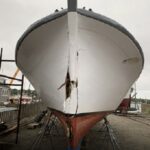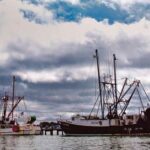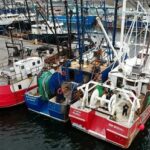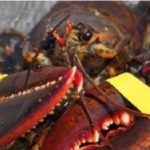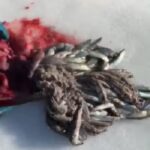Tag Archives: Georges Bank
BP oil spill dispersants concern Nova Scotia Anti Drilling Group
 “When you mix this stuff with the oil, you create a compound that is substantially more dangerous than even the dangerous dispersant on its own or even the dangerous oil on its own and this is the issue that we have,” says John Davis, a founder of the No Rigs Coalition. He says Shell has already put out bids to use Corexit if there is a spill at a well planned for the Shelburne Gully. Davis says he worries the chemical could end up on the Georges Bank, pointing out the Labrador Current would carry any material right to the fertile fishing grounds. Read the rest here 09:20
“When you mix this stuff with the oil, you create a compound that is substantially more dangerous than even the dangerous dispersant on its own or even the dangerous oil on its own and this is the issue that we have,” says John Davis, a founder of the No Rigs Coalition. He says Shell has already put out bids to use Corexit if there is a spill at a well planned for the Shelburne Gully. Davis says he worries the chemical could end up on the Georges Bank, pointing out the Labrador Current would carry any material right to the fertile fishing grounds. Read the rest here 09:20
20 Years Ago: Commercial-Fishing Halt Is Urged for Georges Bank
 While some fishing could continue, the council, the New England Fishery Management Council, directed its staff to come up with measures that would reduce the catch of cod, haddock and yellowtail flounder, the principal species sought on the Georges Bank, to as close to zero as practical. Read more here 08:06
While some fishing could continue, the council, the New England Fishery Management Council, directed its staff to come up with measures that would reduce the catch of cod, haddock and yellowtail flounder, the principal species sought on the Georges Bank, to as close to zero as practical. Read more here 08:06
Georges Bank drilling moratorium maintained by Ottawa
![]() Federal Finance Minister Joe Oliver says Ottawa will maintain its moratorium on oil and gas exploration on Georges Bank, a rich fishing area southwest of Nova Scotia. The ban expires at the end of 2015 and Nova Scotia has been in talks with the federal government about extending it until the end of 2022. Read more here 08:38
Federal Finance Minister Joe Oliver says Ottawa will maintain its moratorium on oil and gas exploration on Georges Bank, a rich fishing area southwest of Nova Scotia. The ban expires at the end of 2015 and Nova Scotia has been in talks with the federal government about extending it until the end of 2022. Read more here 08:38
New Bedford: Scallop buyers get lessons in science, regulation
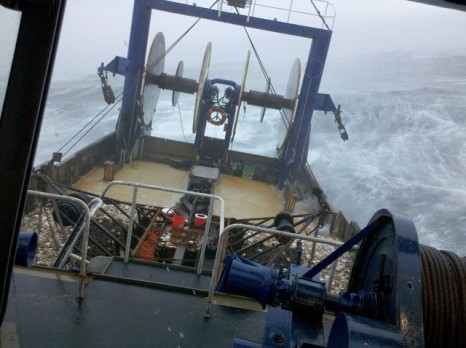 Scallop boats are allowed only about 32 days at sea per year, but scallops are so abundant and lucrative that working on a boat still can be extremely rewarding. Eastern Fisheries’ veteran captain Christopher Audette, who after 20 years on the water looks and sounds like someone from central casting, told the foreign visitors that deck hands on his boat took home more than $200,000 last year. Read more here southcoast 07:53
Scallop boats are allowed only about 32 days at sea per year, but scallops are so abundant and lucrative that working on a boat still can be extremely rewarding. Eastern Fisheries’ veteran captain Christopher Audette, who after 20 years on the water looks and sounds like someone from central casting, told the foreign visitors that deck hands on his boat took home more than $200,000 last year. Read more here southcoast 07:53
New England: Handicapping our fishermen
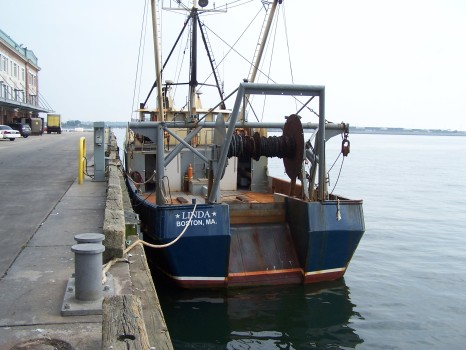 Hadddock populations are known to be cyclical. Having recovered from recent lows in the 1990s, the stock is now healthy and abundant. In fact, for nearly a decade, haddock biomass has been hovering at or above the highest levels recorded in 60 years. But you wouldn’t know that by looking at what American fishermen have been landing. Despite being one of the most plentiful groundfish stocks available, our fishermen have been mostly unsuccessful at harvesting their allocations. Read more here bostonglobe 11:30
Hadddock populations are known to be cyclical. Having recovered from recent lows in the 1990s, the stock is now healthy and abundant. In fact, for nearly a decade, haddock biomass has been hovering at or above the highest levels recorded in 60 years. But you wouldn’t know that by looking at what American fishermen have been landing. Despite being one of the most plentiful groundfish stocks available, our fishermen have been mostly unsuccessful at harvesting their allocations. Read more here bostonglobe 11:30Your View: Eric Hansen – Scallopers need access to Georges Bank
![]() The scallop fishery has become the lifeblood of the New Bedford waterfront, a bright spot in a fishing industry encumbered by onerous regulations and heavy-handed management. It has helped make New Bedford, for the 13th year in a row, the most valuable port in the nation. But,,,Read more here 11:11
The scallop fishery has become the lifeblood of the New Bedford waterfront, a bright spot in a fishing industry encumbered by onerous regulations and heavy-handed management. It has helped make New Bedford, for the 13th year in a row, the most valuable port in the nation. But,,,Read more here 11:11
SAVING SEAFOOD RADIO: NOAA’s Bill Karp on Georges Bank Yellowtail Flounder Assessments
 Saving Seafood’s Bob Vanasse recently sat down with Dr. Bill Karp, Director of NOAA’s Northeast Regional Science Center, to discuss NOAA’s increased focus on cooperative research. Listen to the full interview with NOAA Northeast Regional Science Director Dr. Bill Karp A lot of information, Read the summary here 20:39
Saving Seafood’s Bob Vanasse recently sat down with Dr. Bill Karp, Director of NOAA’s Northeast Regional Science Center, to discuss NOAA’s increased focus on cooperative research. Listen to the full interview with NOAA Northeast Regional Science Director Dr. Bill Karp A lot of information, Read the summary here 20:39
EDITORIAL: Reviving groundfish
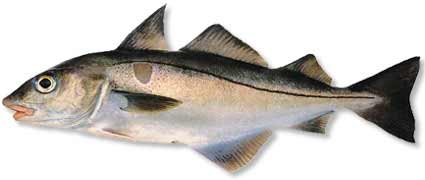 Even heavily overfished, nearly depleted groundfish stocks can fully recover. That, says Dalhousie University marine biology professor Boris Worm, is the underlying message in the stunning rebound of haddock stocks — from near collapse to waters teeming with fish — on Georges Bank. Read more@chronicleherald 17:26
Even heavily overfished, nearly depleted groundfish stocks can fully recover. That, says Dalhousie University marine biology professor Boris Worm, is the underlying message in the stunning rebound of haddock stocks — from near collapse to waters teeming with fish — on Georges Bank. Read more@chronicleherald 17:26
Huge haddock tows from Georges Bank land in Nova Scotia – Fish sent to U.S., where windfall coincides with lower Canadian dollar
 A huge increase in the haddock catch off Georges Bank has the southwestern Nova Scotia port of West Pubnico booming this week. Pubnico’s concrete wharfs have been swarming with forklifts and semi-trailer trucks for days as the fleet lands some of the 16 million kilograms of Georges Bank haddock available for fishermen to catch this year. Fisheries and Oceans Canada has increased the 2014 quota by 250 per cent, to 16,470 metric tons. Read more@cbcnews 19:48
A huge increase in the haddock catch off Georges Bank has the southwestern Nova Scotia port of West Pubnico booming this week. Pubnico’s concrete wharfs have been swarming with forklifts and semi-trailer trucks for days as the fleet lands some of the 16 million kilograms of Georges Bank haddock available for fishermen to catch this year. Fisheries and Oceans Canada has increased the 2014 quota by 250 per cent, to 16,470 metric tons. Read more@cbcnews 19:48
UMass Dartmouth plays integral part in booming scallop business
 Our beloved scallop, the biggest and best in the world, is right off our coast, waiting to make our lives better. The scallop — or placopecten magellanicus — keeps New Bedford the most profitable fishing port in the United States. Those riches wash all over southeastern Massachusetts. Scallops grow on the sandy bottom of Georges Bank, a rise in the sea floor that runs from Maine to New Jersey. The bank starts 20 miles offshore and runs 200 miles out in the ocean. There was a moratorium on fishing for several species, including scallops, after stocks plummeted on Georges Bank in the late 1990s. By 2000, fishermen believed scallops had made a comeback, so they enlisted UMass Dartmouth for help. READ [email protected] 02:13
Our beloved scallop, the biggest and best in the world, is right off our coast, waiting to make our lives better. The scallop — or placopecten magellanicus — keeps New Bedford the most profitable fishing port in the United States. Those riches wash all over southeastern Massachusetts. Scallops grow on the sandy bottom of Georges Bank, a rise in the sea floor that runs from Maine to New Jersey. The bank starts 20 miles offshore and runs 200 miles out in the ocean. There was a moratorium on fishing for several species, including scallops, after stocks plummeted on Georges Bank in the late 1990s. By 2000, fishermen believed scallops had made a comeback, so they enlisted UMass Dartmouth for help. READ [email protected] 02:13
Habitat debate intensifies ahead of NEFMC vote; Many ask, “Do closures even work?”
 WASHINGTON (Saving Seafood) — December 16, 2013 — Georges Bank is home to some of the most important fishing grounds in New England. But large portions of it have been off-limits to commercial groundfishermen and scallopers for almost twenty years, with a network of closed areas in place intended to restore habitat and assist in the rebuilding of fish populations. Now that network is up for revision with the Omnibus Habitat Amendment, which is currently being considered by the New England Fishery Management Council (NEFMC). The Amendment process has sparked a debate among fishermen, scientists, and environmental groups over these areas’ future. Questions have been raised over whether they are best left closed to facilitate conservation, or if the scallop and groundfish fleets should once again be allowed access to some of the most abundant fishery areas in the region. Added to that, is a discussion as to whether or not these closures have even benefited groundfish at all. more here 14:37
WASHINGTON (Saving Seafood) — December 16, 2013 — Georges Bank is home to some of the most important fishing grounds in New England. But large portions of it have been off-limits to commercial groundfishermen and scallopers for almost twenty years, with a network of closed areas in place intended to restore habitat and assist in the rebuilding of fish populations. Now that network is up for revision with the Omnibus Habitat Amendment, which is currently being considered by the New England Fishery Management Council (NEFMC). The Amendment process has sparked a debate among fishermen, scientists, and environmental groups over these areas’ future. Questions have been raised over whether they are best left closed to facilitate conservation, or if the scallop and groundfish fleets should once again be allowed access to some of the most abundant fishery areas in the region. Added to that, is a discussion as to whether or not these closures have even benefited groundfish at all. more here 14:37
Lifting the Ban: After 20 years, Georges Bank clam beds reopen

The National Marine Fisheries Service banned dragging for clams and other molluscan shellfish in Georges Bank in 1990, when state and federal officials found a spike in toxins that cause paralytic shellfish poisoning, which can be lethal. Fifteen years later, the agency barred clamming in an additional 15,000 square miles of seabed between much of the Massachusetts coast and Georges Bank when a massive bloom of single-celled algae that carries the toxins extended from northern Maine to Nantucket. more@bostonglobe 13:15
Norigs 3 Coalition wants action on Georges Bank moratorium – more than just verbal assurances
 Asked by this newspaper about the federal government’s position on the issue of mirror legislation to extend the moratorium to 2022, the response from the federal department of Natural Resources was this: “There is currently a federal policy moratorium on all oil and gas activity on Georges Bank until 2015. This complements a provincial statutory moratorium that runs until 2022.The extension of the policy moratorium until 2015 was a joint decision between the federal Minister of Natural Resources and the Nova Scotia Minister of Energy,” said department spokesperson Joshua Kirkey. continued@THE VANGUARD
Asked by this newspaper about the federal government’s position on the issue of mirror legislation to extend the moratorium to 2022, the response from the federal department of Natural Resources was this: “There is currently a federal policy moratorium on all oil and gas activity on Georges Bank until 2015. This complements a provincial statutory moratorium that runs until 2022.The extension of the policy moratorium until 2015 was a joint decision between the federal Minister of Natural Resources and the Nova Scotia Minister of Energy,” said department spokesperson Joshua Kirkey. continued@THE VANGUARD
Research enables fishermen to harvest lucrative shellfish on Georges Bank
 Phys.Org -The shellfish industry estimates the Georges Bank fishery can produce up to 1 million bushels of surf clams and ocean quahogs a year, valued $10 – 15 million annually. continued
Phys.Org -The shellfish industry estimates the Georges Bank fishery can produce up to 1 million bushels of surf clams and ocean quahogs a year, valued $10 – 15 million annually. continued
New England Offshore Areas Will Reopen for Atlantic Surfclam and Ocean Quahog Fishing
Washington, DC–(ENEWSPF)–December 18, 2012. Beginning this January, fishermen will be able to target abundant stocks of Atlantic surfclams and ocean quahogs on portions of Georges Bank that have been closed to harvesting for 22 years.
Cape Cod scallop fleet cries foul
Much of the best fishing terrain lies in and around the Great South Channel that separates Georges Bank from the mainland, and north in the Gulf of Maine, according to the council’s habitat study, and is listed as a likely site for closure or restrictions. Requiring these new habitat protection zones could be considered as an ecological trade-off for allowing fishermen access to areas currently closed to most fishing, according to the council. http://www.capecodonline.com/apps/pbcs.dll/article?AID=/20121115/NEWS/211150334

































